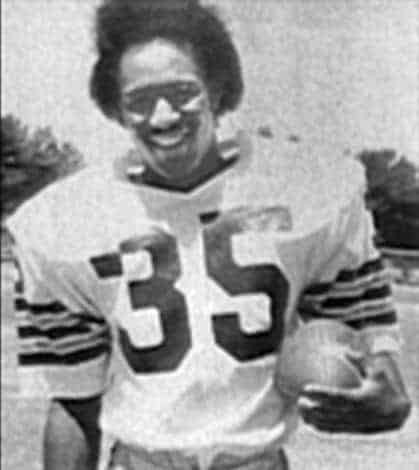In the annals of legal history, the name Lawyer Johnnie Cochran resonates deeply, synonymous with landmark cases and a relentless pursuit of justice. Long before the O.J. Simpson trial propelled him to international fame, Cochran was a dedicated advocate fighting for the rights of the marginalized and challenging systemic injustices. One such pivotal case early in his career was the tragic story of Ron Settles, a young, promising football star whose life was abruptly cut short under suspicious circumstances while in police custody. This case, handled by lawyer Johnnie Cochran, not only highlights his unwavering commitment to truth but also exposed the dark underbelly of racial bias and police misconduct.
The events unfolded on June 2, 1981, when Ron Settles, a young African American man with a bright future in professional football, was driving to his part-time job. Taking a shortcut through Signal Hill, a city with a known reputation for racial profiling and police harassment, Settles was pulled over by Officer Jerry Lee Brown. The following morning, Settles was found dead in his jail cell, and the official narrative painted a picture of suicide, a stark contrast to the reality that lawyer Johnnie Cochran would ultimately uncover.
 Ron Settles case timeline highlighting lawyer Johnnie Cochran's involvement in uncovering police misconduct and fighting for justice.
Ron Settles case timeline highlighting lawyer Johnnie Cochran's involvement in uncovering police misconduct and fighting for justice.
The Signal Hill Police Department asserted that Settles was stopped for speeding and became aggressive, allegedly brandishing a knife and possessing cocaine paraphernalia. They claimed he was arrested, and later, despite initially refusing, he made a call to his mother who arranged bail. According to the police account, before bail could be posted, Settles was found dead in his cell, hanging by a mattress cover – a supposed suicide.
However, Ron Settles’ parents, Helen and Donell Settles, vehemently rejected this version of events. When they sought the help of lawyer Johnnie Cochran, they were convinced their son, a man with no history of drug use or suicidal tendencies, had been murdered. Cochran, listening intently to their story, recognized the uphill battle ahead. He explained the challenges of taking on law enforcement, especially with no independent witnesses and the inherent difficulty in proving police misconduct. Yet, deeply moved by the Settles’ plight and convinced of their son’s innocence, lawyer Johnnie Cochran made a promise: he would uncover the truth behind Ron Settles’ death.
Cochran’s first step was the coroner’s inquest, a process that spanned eleven days and involved nearly thirty witnesses. Crucially, a white attorney who witnessed Settles’ arrest testified, directly contradicting the police’s account of events. An inmate from the Signal Hill jail also came forward, testifying that he overheard officers beating Settles and was suspiciously moved from his cell before Settles’ body was “discovered.” This inmate and another who had previously occupied Settles’ cell both confirmed there was no mattress cover in the cell, further undermining the police suicide narrative. Adding to the inconsistencies, toxicology reports revealed no trace of drugs in Settles’ system. In a telling move, six of the seven officers involved invoked their Fifth Amendment right against self-incrimination when called to testify. Despite these glaring discrepancies, the coroner’s jury concluded that Settles died “at the hands of another,” but the police’s “conspiracy of silence” effectively shielded them from accountability.
Undeterred by the inquest’s limitations, lawyer Johnnie Cochran knew more needed to be done. He approached Helen and Donell Settles with a bold proposal: exhuming Ron’s body for an independent autopsy. With their courageous consent, Cochran contacted Dr. Michael Baden, a renowned forensic pathologist, and Sidney Weinberg. The independent autopsy revealed a shocking truth: Ron Settles had suffered broken bones, extensive bruising on his face, neck, and torso, and esophageal hemorrhaging. Dr. Baden concluded that Settles’ windpipe had been crushed against his spine – clear evidence of a chokehold. Again, no drugs were found in his system.
Armed with this irrefutable evidence, lawyer Johnnie Cochran delivered the devastating news to Ron’s parents, stating, “They beat him, then they put him in a choke hold, and he died.” While a living witness to the beating remained elusive, Cochran emphasized that Ron, through the autopsy, had spoken from the grave, revealing the horrific truth. The Ron Settles case, spearheaded by lawyer Johnnie Cochran, became a stark reminder of the fight for justice against powerful institutions and a testament to Cochran’s early career dedication to uncovering truth and holding power accountable, even in the face of seemingly insurmountable odds.

